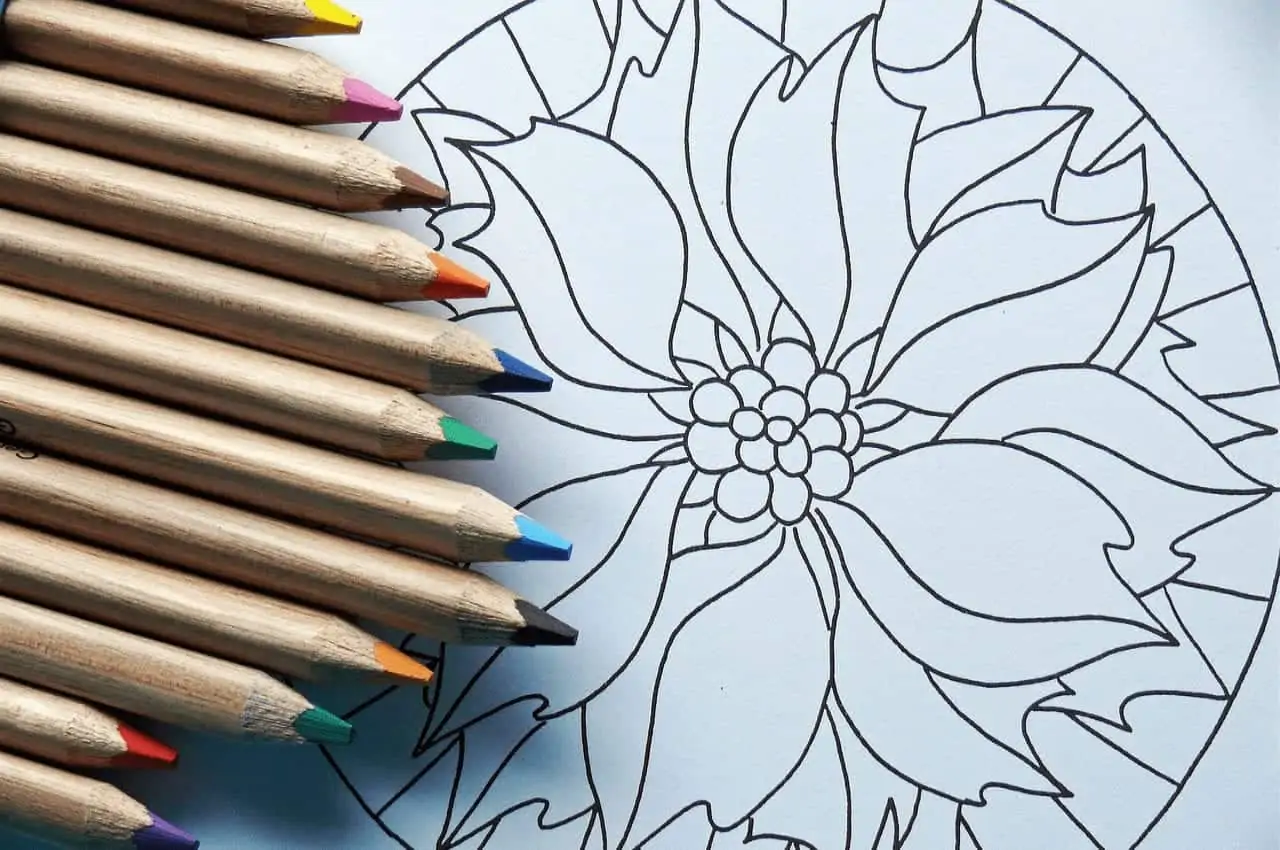If you’re an artist, chances are you have a lot of loose sketches that you’ve done over time. Whether it’s doodles on scrap paper, unfinished pieces, or practice sketches, these loose pieces of paper can pile up quickly and become a hassle to organize. Don’t worry, We have put together some tips and tricks to help you store your loose sketches in a way that will keep them in the best condition and make them easier to easy.
Table of Contents
How Do Artists Store Their Drawings?
Before we dive into the methods for storing your loose sketches, let’s first discuss materials. Archival quality paper, sketchbooks and ink can be expensive. But the paper is acid free and will last without affecting your artwork and using archival ink will make the sketches themselves last longer.
To make it easier for you, we have a comprehensive guide on how to store your drawings. To start, here is a list of some of the materials you might need. Look at what you need to store, the best way to store it, and then write a list of what you will need.

Materials You Might Need for Storage
- Acid-free folders will stop the deterioration of the artwork stored inside.
- Acid-free tapes for mounting and framing
- Frames can often be the best way to store larger pieces
- Matting/backing materials will lift charcoal and pastel drawings off the glass if they are framed
- Portfolio with acid-free plastic sleeves mean you can look at the art without touching the individual pieces of paper.
- Fixative or varnish
- Glassine and Acid-free lining papers to use as separators
- Clamshell boxes or other Airtight containers may be the best option for long term storage.

Use Sketchbooks
Investing in a sketchbook is an excellent way to keep your artwork organized and protected. Sketchbooks are available in different sizes and styles, so you can choose the one that best fits your needs. They’re especially useful if you have a lot of loose sketches that you want to keep together.
Here are some tips on how to use sketchbooks to store your sketches:
- Choose a sketchbook size that matches your sketch size: Before buying a sketchbook, consider the size of your sketches. You want to choose a sketchbook that is the right size for your sketches, so they fit comfortably inside the book. This will help keep your sketches organized and prevent them from becoming damaged.
- Paste or tape your sketch into the sketchbook: Once you have your sketchbook, you can start to fill it with your loose sketches. To do this, you can either paste or tape your sketches into the sketchbook. Use acid-free adhesive to avoid any damage to your artwork.
- Label the sketch with the date, subject matter, or any other relevant information: It’s essential to label each sketch with relevant information, such as the date it was created, the subject matter, or any other relevant details. This will help you easily find a specific sketch later on when you need it.
Methods for Storing Loose Sketches
Use Acid-Free Folders or a Good Portfolio
Acid-free folders are a great option for storing your loose sketches because they are specifically designed to protect your artwork from acid damage. Acid damage can occur when the paper or other materials your sketches are stored with contain acids that can react with the paper, causing it to become discolored, brittle, and fragile over time. Acid-free folders are made from materials that are pH neutral, so they won’t react with your sketches and cause damage.
- Choose a folder size that matches your sketch size: It’s important to choose a folder size that matches the size of your sketch so that it fits snugly and doesn’t move around inside the folder. This will help prevent creases or folds from forming on your sketches.
- Place your sketch inside the folder, making sure it’s centred and flat: When placing your sketch inside the folder, make sure it’s centred and flat to prevent it from shifting around and becoming damaged. If your sketch is larger than the folder, you can fold it in half or thirds to fit inside.
- Label the folder with the date, subject matter, or any other relevant information: It’s important to label your folders with information about the sketches inside so that you can easily find what you’re looking for later. This could include the date the sketch was made, the subject matter, the medium used, or any other relevant information. You can use a pen or marker to write on the folder or use adhesive labels.
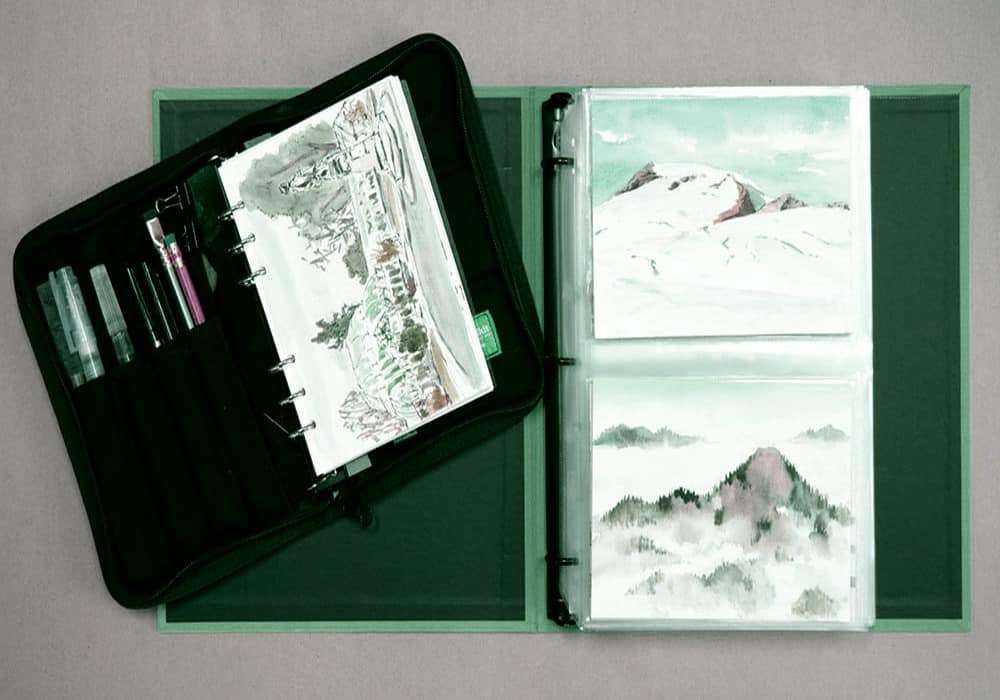
Store in Clear Plastic Sleeves
Storing your sketches in clear plastic sleeves is another great way to protect them from damage. Clear plastic sleeves are made from archival quality plastic, which means they won’t cause any damage to your artwork over time. Plus, they offer the added benefit of being transparent, so you can easily see your sketches without having to remove them from the sleeves.
To use clear plastic sleeves to store your sketches, follow these simple steps:
- Choose a sleeve size that matches your sketch size: It’s important to choose a sleeve size that matches the size of your sketch so that it fits snugly and doesn’t move around inside the sleeve. This will help prevent creases or folds from forming on your sketches.
- Slide your sketch inside the sleeve, making sure it’s centred and flat: When sliding your sketch inside the sleeve, make sure it’s centred and flat to prevent it from shifting around and becoming damaged. You can use a piece of cardboard or a ruler to help guide the sketch into the sleeve.
- Label the sleeve with the date, subject matter, or any other relevant information: Just like with the acid-free folders, it’s important to label your sleeves with information about the sketches inside. This will help you easily identify the contents of the sleeves without having to remove the sketches from the sleeves. You can use a pen or marker to write on the sleeve or use adhesive labels.
Clear plastic sleeves are an affordable and convenient option for storing your sketches. They are available in most art supply stores and can be easily organized in a binder or portfolio. They also offer protection from dirt, dust, and moisture, which can cause damage to your artwork over time. So if you’re looking for a simple and effective way to store your sketches, try using clear plastic sleeves today!
Store in Airtight Containers
If you have a large collection of sketches, or if you want to protect your artwork from environmental factors, then airtight containers can be an excellent storage solution. Airtight containers are designed to protect your artwork from dust, moisture, and other environmental factors that can cause damage over time.
- Choose a container size that matches your sketch size: Before purchasing an airtight container, consider the size of your sketches. You want to choose a container that is the right size for your sketches, so they fit comfortably inside the container without getting bent or damaged.
- Place your sketches inside the container, making sure they’re centred and flat: Once you have your container, you can start to fill it with your sketches. Make sure that your sketches are centred and flat, so they don’t get damaged while being stored.
- Label the container with the date, subject matter, or any other relevant information: It’s essential to label each container with relevant information, such as the date the sketches were created, the subject matter, or any other relevant details. This will help you easily find a specific sketch later on when you need it.
Airtight containers come in different sizes and materials, such as plastic, metal, or glass. Choose the one that best suits your needs and budget. Keep in mind that airtight containers are ideal for long-term storage and should be kept in a dry, cool, and dark place.
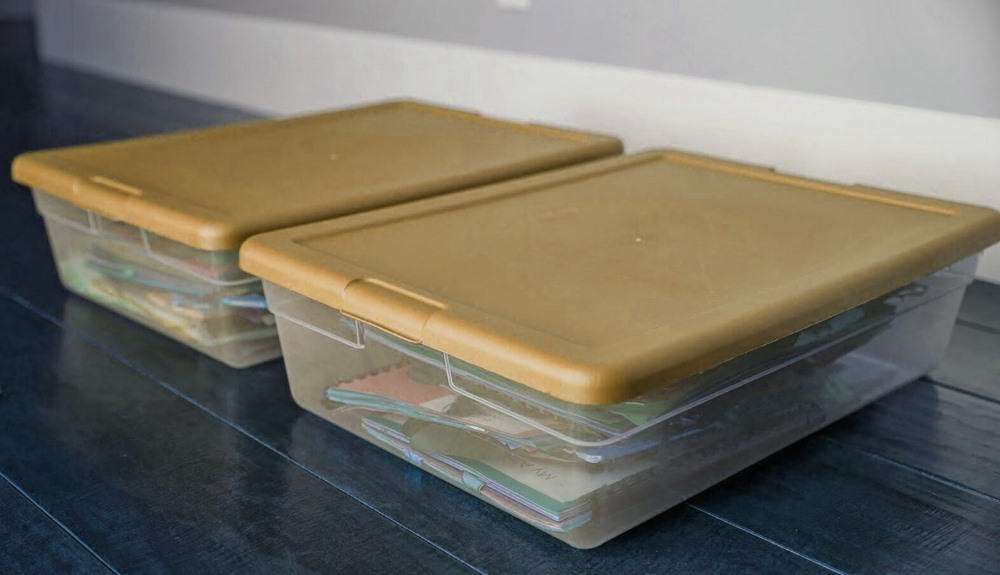
What Is the Best Way to Store Drawings?
The exact method for storing a drawing will depend on the mediums used to create the artwork. A drawing can be created with more than just a pencil, making some drawings more fragile than others.
For Charcoal and Pastel Based Drawings
Charcoal and Pastels are both popular drawing medium, but anyone who has worked with them knows they smudge easily. It is often why we choose them for particular drawings. Before storing charcoal or pastel drawings, use fixative sprays to help limit smudging.
You should spray all your pastel or charcoal drawings with fixative spray before storing or moving them. Spray several thin coats following the instructions on the fixative.
Once the fixative is applied and properly dry, you can pack the drawings. It is best to line these sort of drawings with acid-free paper before putting them in a plastic sleeve or folder. Using a lining paper will help stop any rubbing and acid free paper will stop the paper of the drawing from yellowing.
Glassine is better if you can afford it for your more precious drawings because it is more smudge-resistant. You can also use clamshell boxes that are specifically made for archival purposes. These are made using completely acid-free materials.
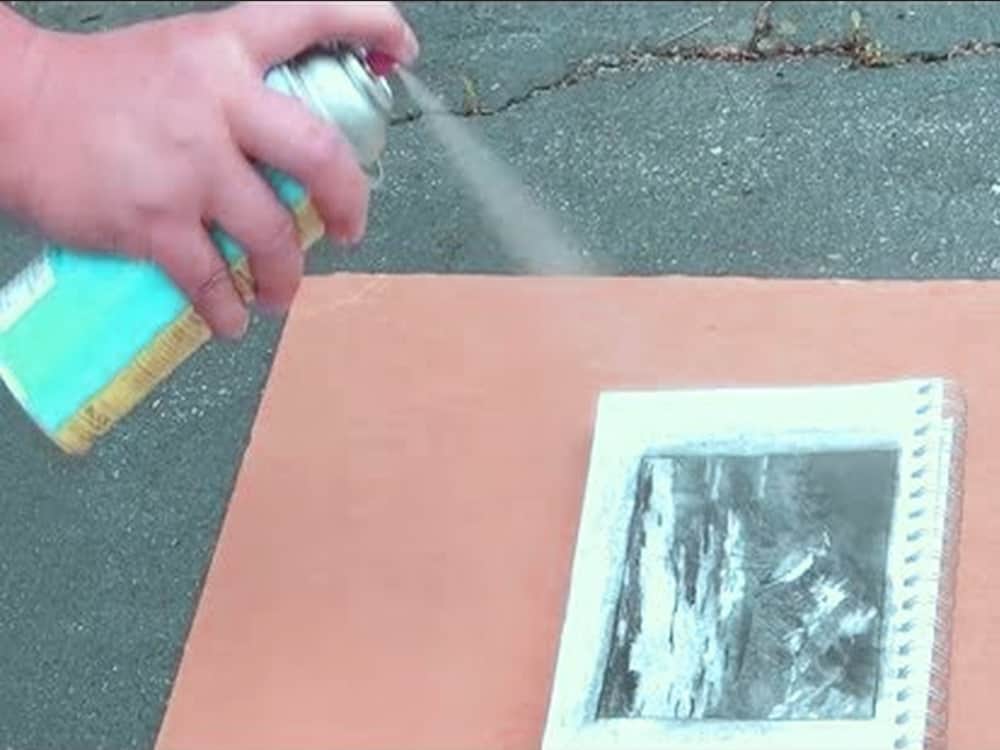
For Pencil or Graphite Drawings
If soft pencils or graphite has been used it is best to fix them with a light coat of workable fixative. This means that the fixative should allow the addition of more layers of graphite after the spray has dried if ever needed.
Make sure to spray only a light coat of fixative on the drawings. It will help prevent smudging and mean that any dust that collects is more easily removed.
Once the fixative is fully dry, you can line the drawings with glassine and keep them in non-acidic plastic sleeves to prevent yellowing.
Special Precautions and Guidance
- Ordinary lining papers are acidic and, over time, turn the drawings yellowish or ashy. Therefore it’s better to avoid them.
- Please don’t use a normal cardboard box to store drawings as it could contain acid and ruin the pictures.
- While using fixatives or varnish, make sure to spray them in an area that is well ventilated and do not spray near naked flames.
- Keep the fixatives and varnish sprays away from the reach of children
- Always follow the instructions on the can.
- Buy portfolios, sleeves and folders that are specifically made for archival purposes.
- Make sure to line the drawings with glassine or acid-free paper.
- When framing drawings, always use matt mount-board
- For storing the framed pieces, make sure to use protective material around the frame or line it with bubble wrap.
- Store the drawings in a dry area to prevent damage.
- Always add non-acidic lining paper between drawings that are stored together.
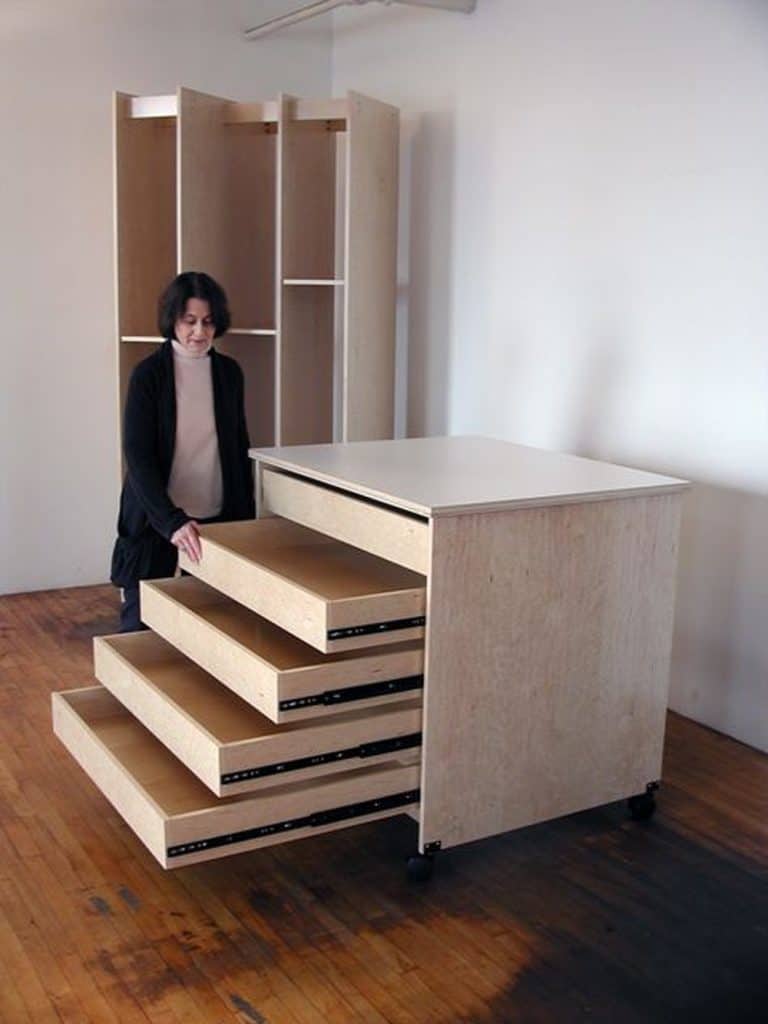
How to Store Drawings at Home
Storing your drawings at home can be difficult if you don’t have good storage space. You need somewhere with a moderate temperature all year-round and it needs to be low humidity. Avoid basements. However dry they may feel it is unusual for them not to suffer from damp at some point.
Light is also your enemy. If you can keep the drawings in a lightproof box but however you do it, try and let as little light in as possible. The UV light in sunlight will bleach and fade ink or pencil, and paper can become discolored too.
Lay your drawings or the folders you have used on flat acid-free boards. Make a column of the stacked boards and if possible store them in an air-tight container. One thing I have used is the modern vacuum clothes bags available. As long as you use a stiff board with no sharp edges top and bottom before you suck the air out they can be a great low cost solution.
Store them laid horizontally on a flat surface. Cover them with a dark, light-proof material if you have no lightproof boxes that are suitable. You can use multiple layers. It will keep dust and light off them. If the drawings are going to be stored long-term, you should consider airing them out annually to prevent humidity from building up. It is also a good idea to turn them every so often.
How to Store Big Drawings
Large drawings can be difficult to store. It might be tempting to roll large drawings to make storage easier. However, it can cause problems and is definitely not recommended for long-term storage. It should never be used for charcoal or pastel drawings.
Attempting to flatten a drawing after it has been rolled up can cause long-term damage. Wherever possible, store large pictures flat, it is always the best solution.

Conclusion
properly storing your loose sketches is crucial if you want to preserve your artwork for years to come. By following the tips and tricks outlined in this article, you can ensure that your sketches stay safe and accessible.
Remember to use archival quality paper or sketchbooks, acid-free folders, clear plastic sleeves, and airtight containers to protect your artwork from environmental factors that can cause damage over time.
With the right materials and methods, storing your sketches can be a breeze, allowing you to focus on creating new and exciting artwork without worrying about the safety of your old sketches. So don’t hesitate, get organized, and keep creating!



